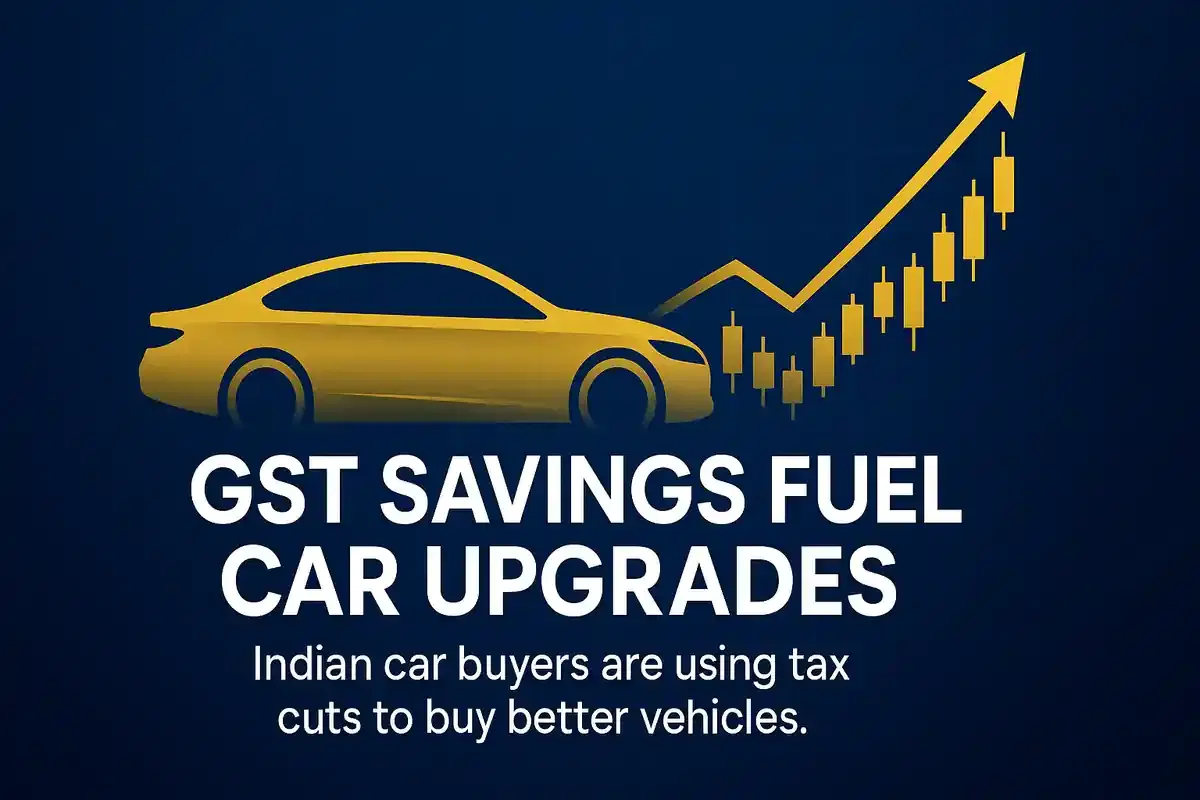GST Reductions Drive Indian Car Buyers Towards Upgrades, Not Savings, Study Finds
Auto
|
28th October 2025, 11:42 AM

▶
Short Description :
Detailed Coverage :
Heading: Car Buyers Prioritize Upgrades Over Savings Post-GST Reductions
A recent study titled ‘Post GST Car Buying Behaviour Trends’ by consumer intelligence platform SmyttenPulse AI surveyed over 5,000 individuals across Tier 1, 2, and 3 cities in India. The findings indicate a significant shift in consumer behavior following Goods and Services Tax (GST) reductions on automobiles.
Key Findings: * **Upgrade Trend**: Approximately 80% of car buyers utilized the GST tax relief to upgrade to superior models, premium brands, or enhanced features, rather than pocketing the savings. * **Model Preference**: Sports Utility Vehicles (SUVs) continue to be the most sought-after vehicle type among buyers. * **Electric Vehicle (EV) Consideration**: Growing environmental awareness is boosting interest in Electric Vehicles. However, challenges such as limited charging infrastructure and concerns about battery life and replacement costs persist. * **Financial Confidence**: A majority of respondents (53%) expressed readiness to make larger down payments or opt for extended loan tenures, signaling returning financial confidence. * **Aspirational Buying**: The study suggests that GST cuts have reignited aspirations, with middle-class buyers leveraging the opportunity to move towards higher variants and feature-rich models.
Impact: This trend suggests strong underlying demand and aspirational buying in the Indian auto sector. Companies that offer attractive higher-end variants, SUVs, and innovative EV technology are likely to benefit. Increased sales volumes and potentially higher average selling prices (ASPs) could boost revenue and profitability for auto manufacturers and dealerships. It also indicates robust consumer sentiment and financial capacity, which is positive for the broader economy. Impact Rating: 7/10
Difficult Terms Explained: * **GST (Goods and Services Tax)**: An indirect tax levied on the supply of goods and services in India. Reductions in GST rates make products cheaper. * **SUV (Sport Utility Vehicle)**: A type of vehicle that combines elements of road-going passenger cars with features from off-road vehicles such as raised ground clearance and often four-wheel drive. * **EV (Electric Vehicle)**: A vehicle that uses one or more electric motors for propulsion, powered by electricity stored in rechargeable batteries. * **Tier 1, 2, and 3 cities**: A classification of Indian cities based on population size and economic importance. Tier 1 cities are the largest metropolitan areas, Tier 2 are medium-sized cities, and Tier 3 are smaller cities. * **Festive season**: A period in India characterized by major cultural and religious festivals, typically associated with increased consumer spending and purchases. * **Variants**: Different versions of a car model, usually differing in features, engine specifications, and price points. * **Hatchbacks**: A car body style smaller than a sedan or SUV, characterized by a rear door that swings upward to access the cargo area. * **Down payments**: The initial sum of money paid by a buyer at the time of purchase of a good or service, with the remainder paid over time. * **Loan tenures**: The specified period for which a loan is granted.